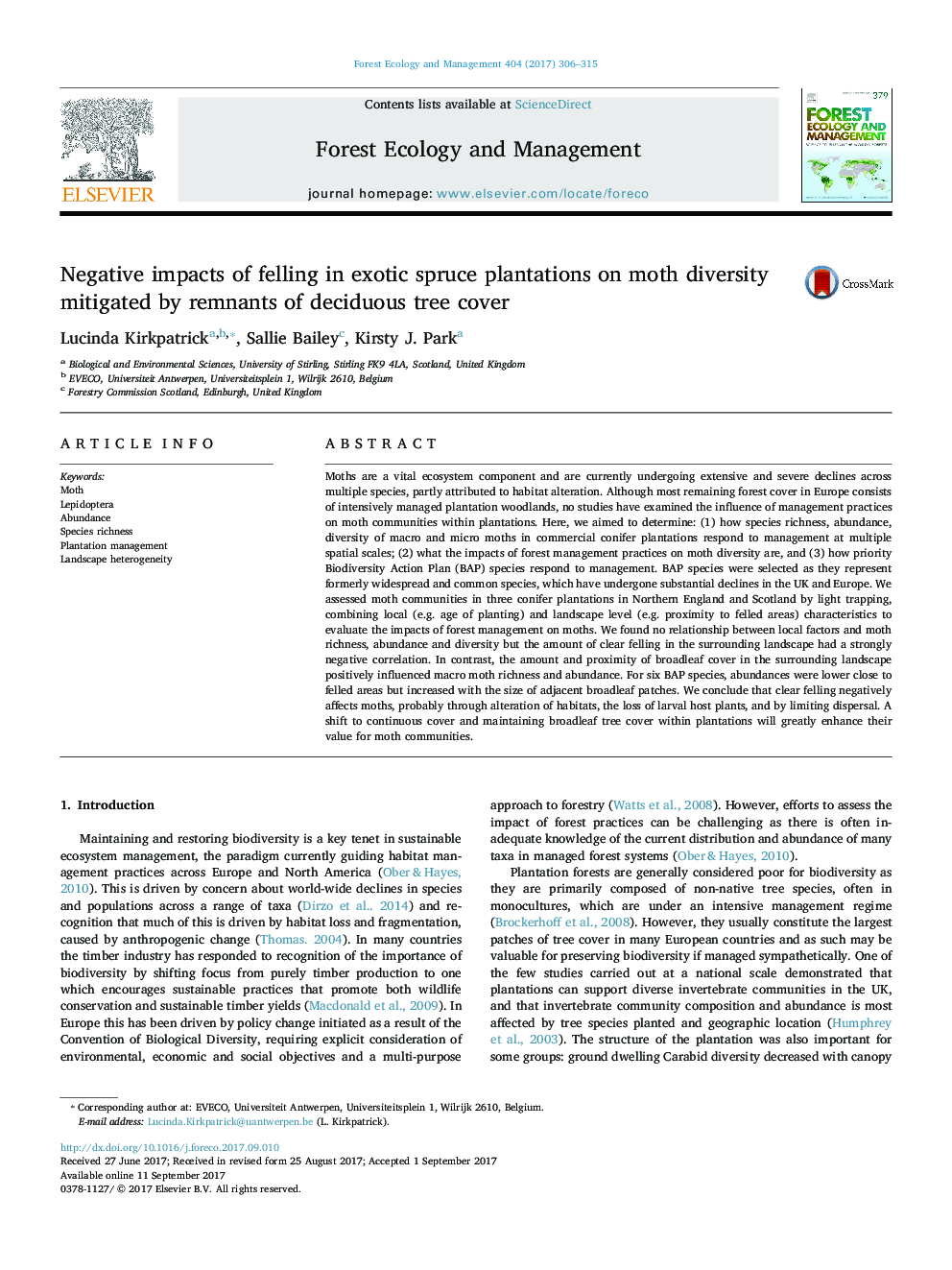| Article ID | Journal | Published Year | Pages | File Type |
|---|---|---|---|---|
| 6459178 | Forest Ecology and Management | 2017 | 10 Pages |
â¢Plantation land cover is increasing worldwide, but rarely surveyed for biodiversity.â¢Moths are undergoing widespread and significant declines in many countries.â¢We surveyed exotic commercial conifer plantations for moth abundance and diversity.â¢Moth richness and abundance were significantly negatively impacted by clear-felling.â¢Broadleaf tree cover correlated positively with moth richness and abundance.
Moths are a vital ecosystem component and are currently undergoing extensive and severe declines across multiple species, partly attributed to habitat alteration. Although most remaining forest cover in Europe consists of intensively managed plantation woodlands, no studies have examined the influence of management practices on moth communities within plantations. Here, we aimed to determine: (1) how species richness, abundance, diversity of macro and micro moths in commercial conifer plantations respond to management at multiple spatial scales; (2) what the impacts of forest management practices on moth diversity are, and (3) how priority Biodiversity Action Plan (BAP) species respond to management. BAP species were selected as they represent formerly widespread and common species, which have undergone substantial declines in the UK and Europe. We assessed moth communities in three conifer plantations in Northern England and Scotland by light trapping, combining local (e.g. age of planting) and landscape level (e.g. proximity to felled areas) characteristics to evaluate the impacts of forest management on moths. We found no relationship between local factors and moth richness, abundance and diversity but the amount of clear felling in the surrounding landscape had a strongly negative correlation. In contrast, the amount and proximity of broadleaf cover in the surrounding landscape positively influenced macro moth richness and abundance. For six BAP species, abundances were lower close to felled areas but increased with the size of adjacent broadleaf patches. We conclude that clear felling negatively affects moths, probably through alteration of habitats, the loss of larval host plants, and by limiting dispersal. A shift to continuous cover and maintaining broadleaf tree cover within plantations will greatly enhance their value for moth communities.
